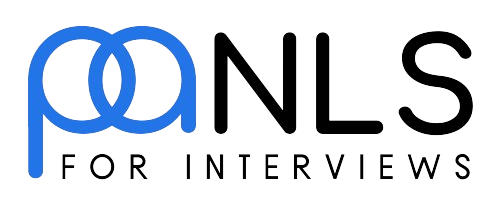Recruitment Process in HRM: Steps, Strategies, and How to Streamline with Interview-as-a-Service

The recruitment process in HRM plays a pivotal role in determining the success of an organization’s talent acquisition strategy. It is a critical part of Human Resource Management (HRM) and influences how well an organization can identify, attract, and hire top talent. An efficient recruitment process in HRM ensures that a business has the right people in the right roles, which directly impacts its productivity, culture, and growth. In this article, we will explore the detailed steps involved in the recruitment process in HRM, identify common challenges HR teams face, and discuss how modern solutions like Interview-as-a-Service (IAAS) can streamline and improve recruitment efforts.
By understanding the recruitment process in HRM, HR professionals can optimize their approach, reduce hiring delays, and focus on selecting candidates who are the best fit for the company’s needs. Let’s dive into the essential stages of recruitment and discover how innovative technologies are reshaping the hiring landscape.
What is the Recruitment Process in HRM?
The recruitment process in HRM is the systematic approach an organization uses to identify, attract, interview, and hire candidates for open roles. This process is designed to ensure that the best individuals are hired to meet the needs of the company. HRM professionals are responsible for coordinating all the steps in this process, from job analysis to onboarding, and they play a central role in shaping the talent strategy.
Recruitment can be divided into two main categories:
- Internal Recruitment: Involves sourcing candidates from within the company through promotions, transfers, or internal job postings.
- External Recruitment: Focuses on attracting talent from outside the organization through external job boards, recruitment agencies, and social media platforms.
The recruitment process in HRM can be complex and time-consuming, but with the right strategies, HR teams can overcome these challenges and ensure a smooth hiring process.
Essential Steps in the Recruitment Process
Let’s break down the recruitment process in HRM into eight critical stages. Each stage is designed to ensure that only the best candidates move forward in the hiring process.
Job Analysis and Design
The first step in the recruitment process in HRM is job analysis. It is the foundation of a successful recruitment strategy. This step involves working closely with department heads to understand the roles, responsibilities, and qualifications needed for the position. A well-conducted job analysis ensures that you have a clear understanding of what the role entails and what skills are necessary to perform it effectively.
Tips:
- Regularly update job descriptions to reflect changes in responsibilities and qualifications.
- Collaborate with department heads to ensure accurate job requirements.
Preparing the Job Description
A well-written job description (JD) is a vital part of the recruitment process in HRM. The JD outlines the role’s key responsibilities, required skills, and the qualifications needed to succeed. An effective JD helps attract the right candidates while setting clear expectations.
Key Components of a Good JD:
- Job Title: The official name of the position.
- Responsibilities: A clear outline of daily tasks and duties.
- Qualifications: The required skills, education, and experience.
- Company Culture: Information about the work environment and values.
SEO Tip: Using relevant keywords like the job title and required skills in the job description will improve its visibility on search engines and job boards.
Sourcing Candidates
Sourcing candidates is one of the most crucial steps in the recruitment process in HRM. It involves finding the right candidates through a variety of channels. Sourcing can be done internally by reaching out to current employees or externally by posting on job boards, using social media platforms, or working with recruiting agencies.
Effective Sourcing Methods:
- Internal: Promote job openings to current employees, encouraging referrals and internal applications.
- External: Use job boards like Indeed or LinkedIn, or work with recruitment agencies.
- Social Media: Platforms like LinkedIn, Facebook, and Twitter can help identify passive candidates who may not be actively job hunting.
Screening and Shortlisting
After sourcing candidates, the next step in the recruitment process in HRM is screening. This stage involves reviewing resumes, cover letters, and applications to determine if the candidate meets the minimum qualifications and is a potential fit for the role. Advanced tools like resume parsers and Boolean search techniques help streamline this process.
Screening Tips:
- Use automated systems to filter candidates based on specific keywords and criteria.
- Review resumes for relevant experience, skills, and accomplishments.
Interviewing the Candidates
The interview stage is one of the most significant steps in the recruitment process in HRM. It gives HR professionals an opportunity to evaluate a candidate’s skills, experience, and cultural fit. Interviews can be structured, unstructured, or behavioral, and each type serves a different purpose.
Types of Interviews:
- Technical Interviews: Focus on evaluating a candidate’s technical skills and expertise.
- Behavioral Interviews: Designed to assess how a candidate has handled specific situations in the past.
- Panel Interviews: Involve multiple interviewers to gain a balanced perspective on the candidate.
Assessing Candidate Fit
Beyond just assessing technical skills, HR professionals need to evaluate how well candidates fit within the organization’s culture. This involves assessing both skills and cultural fit through psychometric tests, skills assessments, and cultural fit interviews.
Tools for Assessing Fit:
- Skills Tests: Measure job-specific competencies.
- Psychometric Tests: Evaluate cognitive abilities, personality traits, and emotional intelligence.
- Cultural Fit Assessments: Ensure alignment with the company’s values and work environment.
Making the Offer
After evaluating candidates, it’s time to make an offer. This involves negotiating salary, benefits, and other terms of employment. Clear communication during this step ensures that there are no misunderstandings between the candidate and the organization.
Offer Tips:
- Be transparent about salary, benefits, and expectations.
- Address any concerns the candidate may have during the negotiation process.
- Act quickly to secure top talent and avoid losing them to other opportunities.
Onboarding and Retention
Onboarding is a crucial part of the recruitment process in HRM. It ensures that new hires feel welcome and equipped to succeed in their roles. A well-structured onboarding process leads to better employee engagement and retention.
Onboarding Tips:
- Provide new hires with the necessary tools, training, and resources to succeed.
- Introduce them to the company culture and team.
- Continuously engage with new hires to ensure a smooth transition into their new role.
Key Recruitment Challenges HR Professionals Face Today
Despite the many benefits of an organized recruitment process in HRM, HR teams often face several challenges:
- Talent Scarcity: It can be difficult to find qualified candidates, especially for specialized or senior roles.
- Bias in Hiring: Unconscious bias can influence hiring decisions, leading to less diversity and potentially overlooking qualified candidates.
- Delays in the Hiring Process: Manual coordination of interviews, scheduling, and paperwork can slow down the hiring process.
- Interviewer Unavailability: Finding a time that works for all interviewers can lead to delays and a poor candidate experience.
How Technology is Transforming Recruitment in HRM
Technology is revolutionizing the recruitment process in HRM, making it faster and more efficient. Some of the key technological advancements include:
- Applicant Tracking Systems (ATS): These systems automate resume screening and help HR teams manage applications more effectively.
- Automated Resume Screening: AI-powered tools quickly sift through resumes to identify the best candidates.
- Interview Scheduling Platforms: Automation tools help HR professionals schedule interviews efficiently, minimizing delays.
Streamline the Process with Interview-as-a-Service (IAAS)
One of the most innovative solutions to enhance the recruitment process in HRM is Interview-as-a-Service (IAAS). This service allows organizations to outsource their interview process to expert interviewers, ensuring consistent quality and faster turnaround times. IAAS can help streamline recruitment by:
- Reducing Time-to-Hire: IAAS speeds up the interview process, ensuring candidates are assessed quickly.
- Consistency and Quality: Professional interviewers maintain high standards and reduce biases in the process.
- Access to Expertise: IAAS provides access to experienced technical interviewers who can assess specialized roles with precision.
Why Choose Panls for Interview as a Service
Panls.ai is an advanced platform that offers Interview-as-a-Service (IAAS) solutions, particularly beneficial for tech hiring. Here’s why HR teams should choose Panls.ai:
- Seamless Process: Upload a job description, match candidates with interviewers, and schedule interviews effortlessly.
- Enhanced Candidate Experience: With IAAS, HR teams can focus on engaging candidates while leaving the interview process to experts.
- Diversity and Efficiency: Panls.ai helps organizations hire faster while supporting diverse hiring practices and reducing interviewer fatigue.
Ready to fast-track your hiring process? Let expert technical interviewers at Panls.ai help you scale without compromising on quality.
Schedule your demo today and experience recruitment efficiency at its best!
Final Thoughts
The recruitment process in HRM is crucial for any business seeking to hire the best talent. By following the key steps and leveraging technology like Interview-as-a-Service, HR professionals can streamline their hiring process, reduce bias, and improve the candidate experience. By embracing modern solutions, HR can move from reactive hiring to a more strategic, efficient approach that drives organizational success.
Related Blogs:
Different Between Recruitment And Selection | Non Technical Skills For Resume | Disadvantage Of Online Exam | Essentials Of Hrm Is | Jpa Vs Hibernate | Quiet Hiring | Business Intelligence Interview Questions | Etl Developer Interview Questions.
Frequently Asked Questions
The recruitment process in HRM is a structured approach that organizations use to attract, evaluate, and hire talent for open positions. It includes stages such as job analysis, sourcing candidates, interviews, and onboarding.
The recruitment process in HRM typically involves eight key steps: job analysis, job description preparation, sourcing candidates, screening and shortlisting, interviewing, assessing candidate fit, making the offer, and onboarding.
Common challenges include talent scarcity, bias in hiring, interview scheduling conflicts, and delays due to manual processes.
Technology, such as Applicant Tracking Systems (ATS), automated resume screening, and interview scheduling platforms, helps streamline the recruitment process in HRM, making it faster and more efficient.
Interview-as-a-Service (IAAS) is an outsourcing solution where companies can use expert interviewers to conduct interviews on their behalf, ensuring consistent quality and reducing the time-to-hire.
IAAS reduces the administrative burden on HR teams, ensures unbiased and professional interviews, and speeds up the recruitment process by quickly matching candidates with the right interviewers.
Job analysis ensures that the role is clearly defined and that the job description accurately reflects the qualifications, responsibilities, and expectations, which improves candidate sourcing and selection.
Panls.ai offers a seamless IAAS platform that matches candidates with expert interviewers, schedules interviews, and helps improve the efficiency of your recruitment process in HRM while enhancing the candidate experience.
